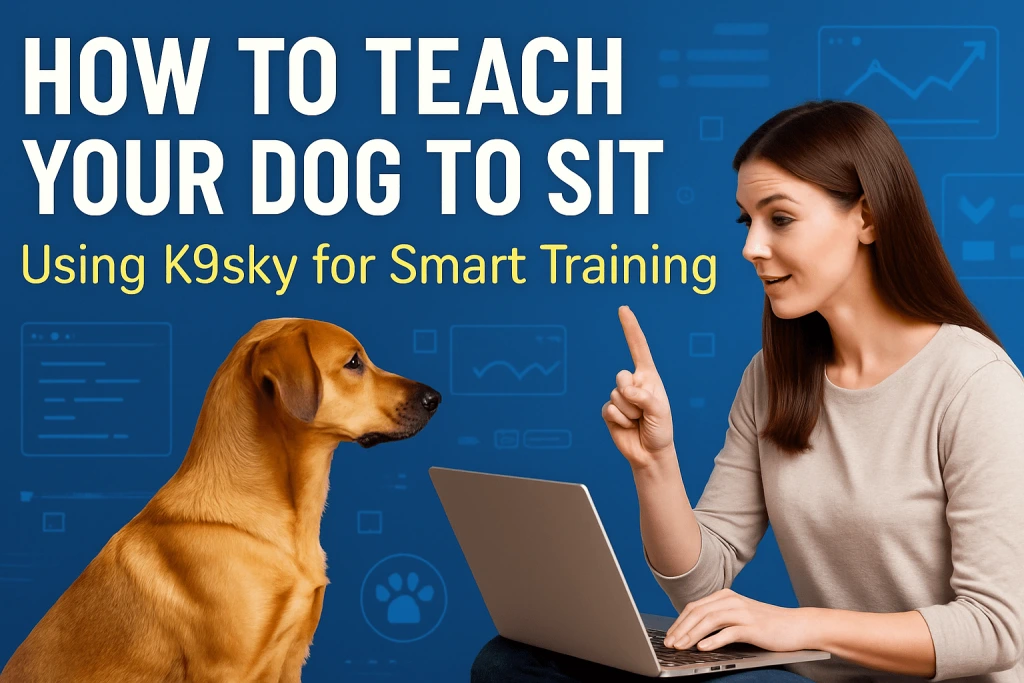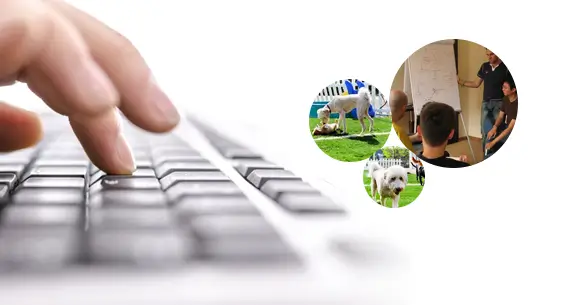It is a dream to have a furry friend who is a good companion and an intelligent creature who can follow orders or do tricks. Building a good relationship with your pet and teaching a dog to sit and stay can make this possible.
According to the American Pet Products Association, 51% of U.S. households will own a dog in 2025, and for many dog owners, teaching their dog to be obedient is very important. Think about how much safer and more fun your daily life will be when your dog can sit quietly by the door or wait patiently for visitors.
It is a good thing you don’t have to teach a dog to sit on your own. There is a new innovative tool that can make your home training easier. K9sky is a modern tool that helps you track your dog’s progress, easily manage training schedules, and store all your pet’s vital information in one place.
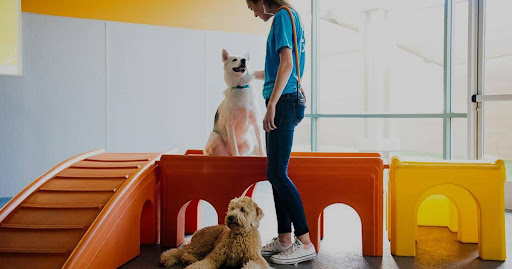
Why Teaching a Dog to Sit is the First Step to a Well-Trained Dog?
Knowing how to teach a dog to sit can keep them safe. They can wait calmly before you cross the street or open a door. It is a clear order that is often easier and more effective than just saying “no.” It can help keep your dog from acting too quickly and even calm down a very playful dog.
This useful command is effective in many everyday situations. You can use it to teach a dog to sit and be patient when they eat, to stop jumping when you greet them, when you are getting ready for a walk, or when you are out.
To teach a dog to sit is helpful in many ways, but it also lays the groundwork for other essential commands such as “stay,” “come,” and various tricks. It builds trust between you and the dog, strengthening your bond.
Employing a reward system can make “sit” a natural behaviour. Your dog will sit down on its own, almost like saying “please” when it wants something.
How to Teach a Dog to Sit: A Step-by-Step Guide
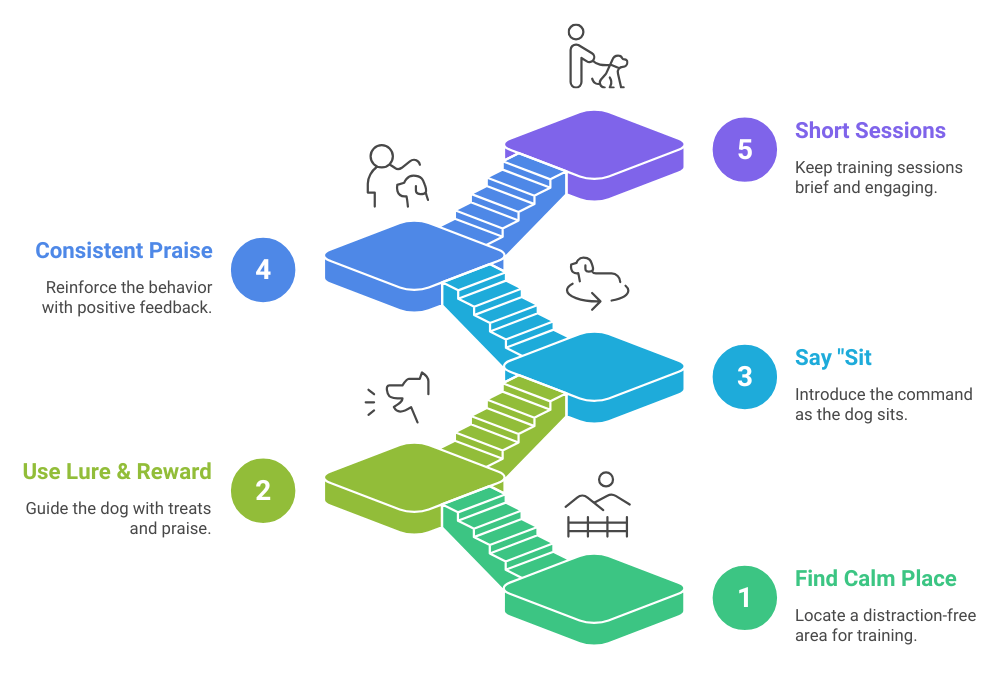
Learning how to teach your dog to sit is simple with lure and reward training.
Step #1: First, find a calm place with no distractions.
Get some tasty treats that your dog likes. Hold a treat close to your dog’s nose. Let them smell it, but do not feed it, and get their attention.
Move the treat slowly, a few inches up and down over their head. When your dog follows the treat with their nose, their back end should naturally drop to the ground. If they back up, try training next to a wall. If they have trouble sitting, move closer so they have to look up at a higher level. It usually helps them sit.
Step #2: Next, say the word “sit”.
When your dog starts to sit down quickly after following the treat, say “Sit.” Say it right when their bottom hits the floor. You can also use a hand gesture, like raising your palm.
As soon as your dog’s bottom touches the floor, happily say, “Good sit!” and give them the treat. If you use a clicker, click it now and then reward them. This immediate praise and reward tell them they did it right. Reward them consistently. To restart, walk away and call them or throw a treat a few feet away.
Step 3: Do engaging and concise teaching sessions.
Ensure your training sessions are short and fun, lasting only 5 to 10 minutes each. Try to do it for 15 to 20 minutes daily, broken into smaller sessions. Always go at the speed your dog is comfortable with.
If necessary, take breaks. Stay calm and excited. Don’t punish your dog for not learning quickly enough. This process takes time, and “sit” should always be good. This is how to teach a dog how to sit.
How to Teach a Dog to "Sit Pretty" and Stay
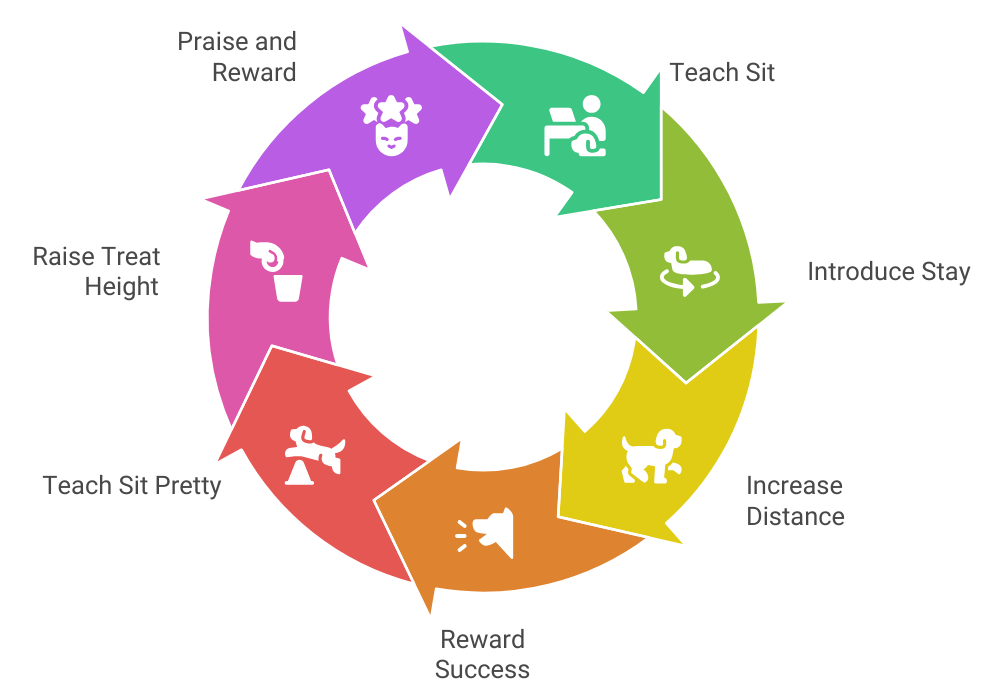
After your dog learns to “sit,” teach them more tricks.Teaching a dog to sit and stay:
Once your dog can sit on command, add short breaks. Say “sit” and then “stay” right away. Take one step back, then return and reward them if they stay where they are. Slowly add more distance and time. Always return to your dog to treat them, which will help them remember to keep in place.
How to teach a dog to sit pretty:
For this trick, your dog has to sit on its back legs with its front paws in the air. Begin with a “sit.” Give them a treat and slowly lift them up and back. Praise and reward your dog as soon as their front paws come up to reach the treat. Gradually raise the treat to the height until they can sit up straight. Do not rush, and speak in a calm voice.
How to Troubleshoot Sit Training at Home
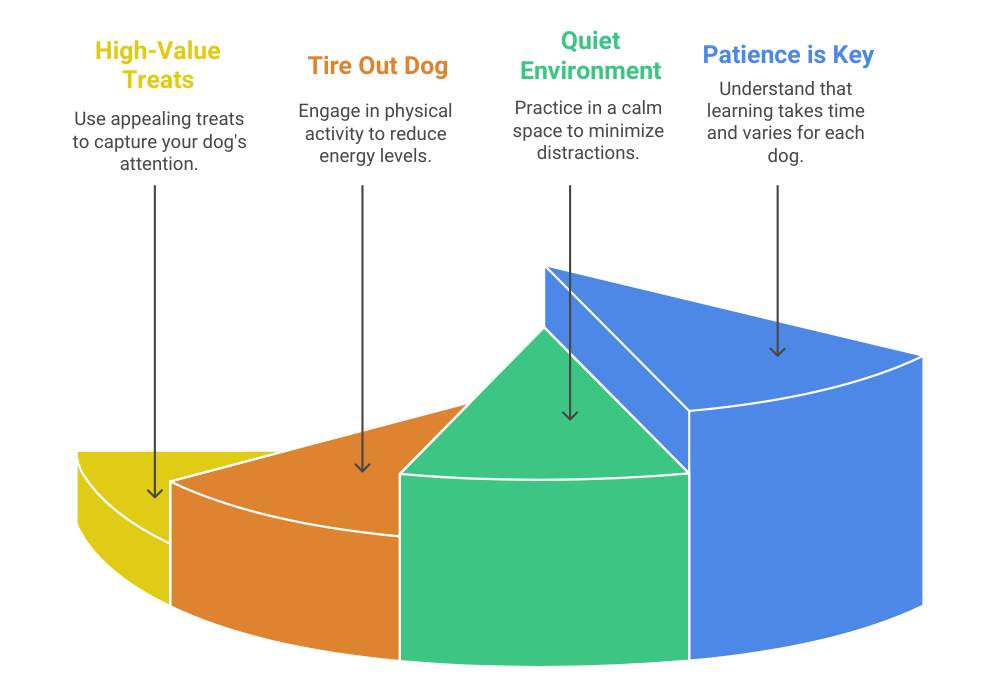
Learning how to teach a dog to sit at home can be hard. These are some common problems and how to fix them:
- Use high-value treats if your dog isn’t interested. If the treats you give them now don’t excite them, try something more appealing, like cheese or cooked chicken, to help them pay attention.
- Is your dog too excited? First, tire them out with a short walk. A dog that is full of energy has a hard time focusing. A short walk or playtime before training helps them relax, making it easier for them to learn.
- If they are not responding, practice in a quiet place. Learning is harder when there are distractions. Go to a calm place where there are few people. You can slowly add more distracting places once they do their job well there.
- Most importantly, be patient. Every dog learns at its own pace. Don’t punish your dog for taking too long; keep things positive. It usually takes puppies 3 to 5 days to learn the “sit” command, but older dogs may require more time. Ensure your older dog is comfortable, especially if it has arthritis. Also, consider using hand signals if they are difficult to hear.
Troubleshooting Sit Training: Common Issues
| Problem | Solution |
|---|---|
| Dog ignores treats | Try higher-value treats (e.g., cheese or chicken) |
| Too energetic | Take a short walk before training |
| Gets distracted easily | Train in quiet places first |
| Older dogs struggle | Ensure they’re comfortable; use hand signals if hearing is impaired |
Use K9Sky for Smarter, Faster Dog Training
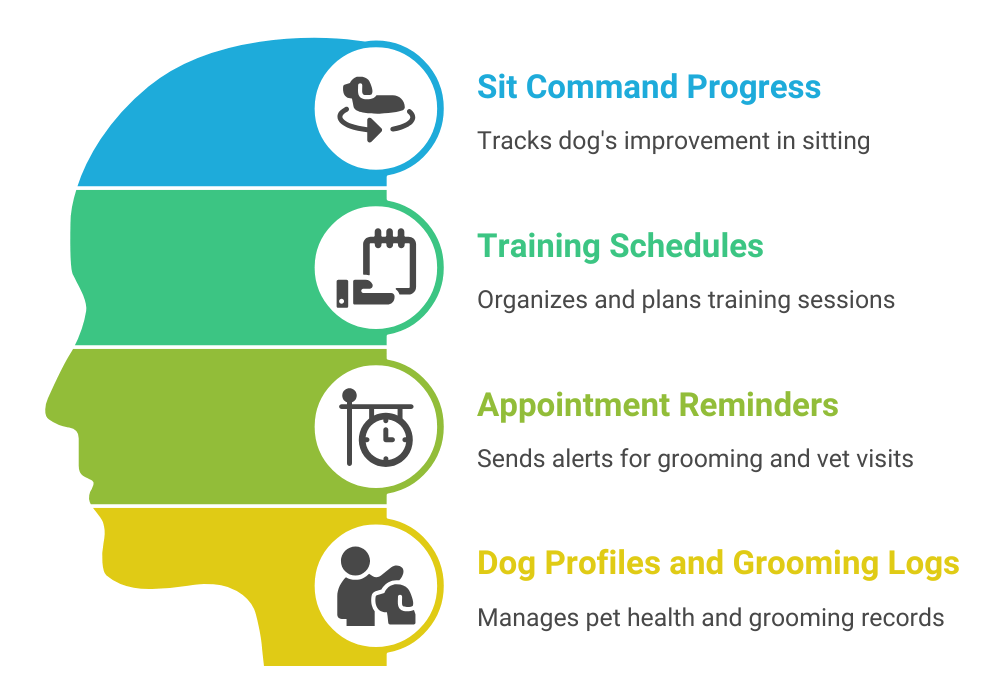
An innovative dog training tool can help teach a dog to sit and stay. A comprehensive pet grooming and training solution, such as K9Sky, makes pet care and training easier for professionals and dog owners. The innovative training and Dog Boarding software from K9sky helps you keep track of everything. Here are some of them:
- Sit Command Progress: Observe your dog’s improvement over time and see how far they have come with the sit command. You can keep track of each training session with K9sky, noting what went well and what could be better.
- Training schedules: Keep a clear record of what you have done and what you need to do next. The software allows you to create your routines and sends you reminders.
- Appointment reminders: You will never miss a grooming appointment, a training session, or a vet visit again. K9sky sends you timely reminders to help you stay on track.
- Dog profiles and grooming logs: Keep your pet’s vital information, such as health records and grooming history, in one place where you can easily find it. This will ensure you have all the necessary information for training or a trip to the vet.
K9sky allows pet owners to track all their grooming appointments, important milestones, and commands like “sit” and “stay.” Both pet professionals and home trainers trust K9sky because it gives them a clear and organized way to train their dogs. It works well to help dogs become well-behaved and happy, giving them the structure and ease they need to learn at home.
How do you teach a dog to sit? It all starts here!
Teaching your dog to “sit” truly marks the beginning of a well-behaved fur baby. A basic command that lays the groundwork for a lifetime of good behavior and a stronger bond.
Having the right tools and investing the time makes a significant difference. Use an innovative solution like K9sky to enhance your training journey. Track your pet’s progress, routines, and information in one place. Take these simple steps and utilize the available help.
Start small, practice daily, and maintain a positive attitude. With K9sky, innovative training is just a click away, making your dream of having a well-trained dog a reality.
FAQs About Teaching a Dog Sit and Stay
1. What is the easiest way to teach a dog to sit?
Hold a treat at your dog’s nose, lift it up and back so the dog’s bottom lowers, say “Sit” as they sit, then give the treat.
2. What is the hardest command to teach a dog?
Commands like “stay” or “leave it” can be most complex because they ask the dog to resist natural impulses. They need slow building and patience.
3. How long does it take to teach your dog to sit?
Many puppies learn in 3 to 5 days with short, regular practice. Older dogs may take longer, depending on focus and distractions.
4. At what age should a dog learn to sit?
You can start at about 8 weeks. Keep sessions short and gentle so young puppies stay interested.
5. How do I start dog sitting?
Get experience helping friends or volunteering, create a safe space, set clear policies, ask for references, and advertise locally or online.
6. Can I teach my dog to sit without treats?
Yes. Use praise, favorite toys, or short play as rewards. The important part is rewarding what the dog values.
7. My dog won’t sit when outside, what should I do?
Train indoors first. Once reliable, practice outdoors in low distraction spots, then slowly add more distractions and high-value rewards.
8. Can older dogs learn to sit?
Yes. Older dogs can learn with patience. Adjust sessions for any joint or mobility limits and use softer rewards.
9. How often should I practice the sit command?
Do two to three sessions daily, about 5 to 10 minutes each. Short and frequent practice works best.
10. Should I use hand signals with the sit command?
Yes. Pair a simple hand signal with the word “Sit” so the dog learns both visual and verbal cues.
11. Can I train my dog to sit in different situations?
Train in various places, such as your living room, backyard, and park. This teaches your dog that “sit” means the same thing everywhere, not just in one spot.
12. How do I stop my dog from jumping and teach them to sit instead?
Ignore jumping behaviour and only give attention when all four paws are on the ground. Ask for a “sit” and reward immediately when they comply.
13. Is it important to sit before teaching other commands?
Sit is a foundation for other commands like stay, wait, and down. It teaches focus and impulse control, which help with advanced training.
14. Can I use clicker training to teach sit?
Yes, clicker training works very well. Click when your dog’s bottom touches the ground, then reward immediately. The sound marks the exact behaviour you want.
15. How can I use K9sky Software for training my dog?
Contact our K9sky team using the support methods listed on K9sky.com. You will receive a 30-day trial to explore features like training reminders, progress tracking, and behaviour notes, all designed to make training easier and more organised.

